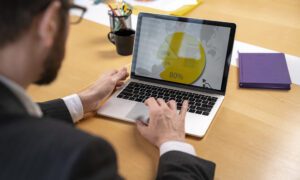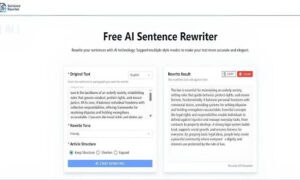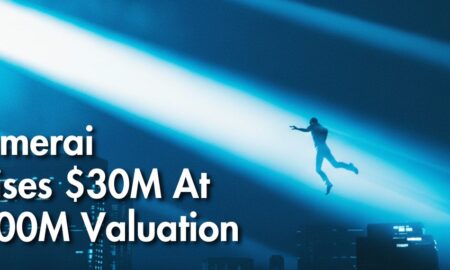MD MOHAIMINUL HASAN
The world of creative work is undergoing one of the most significant shifts in modern history. Intelligent systems are no longer limited to analytical tasks or routine automation. They are moving directly into spaces long considered exclusively human. This new era of human-AI collaboration is reshaping how writers, designers, strategists, and innovators imagine and produce creative output. From content development to product design, the partnership between people and intelligent systems is opening the door to a level of innovation that was almost unthinkable a decade ago.
As an SEO expert, I have seen firsthand how this collaboration is transforming industries. It is not simply about faster production or cheaper processes. It is about elevating creative potential. When artificial intelligence becomes a creative partner rather than a replacement, the outcomes can be extraordinary. The following sections explore how this relationship is developing, why it matters, and where it is taking the future of creative work.
Creativity in the Age of Intelligent Systems
Creativity used to be viewed as an innate human capability, something built on personal experience, emotion, and imagination. While that remains true, intelligent systems are offering new tools that enhance and extend the creative process. AI can analyze vast datasets, identify patterns, and generate concepts at speeds humans cannot match. This does not diminish human creativity. Instead, it provides a launchpad for ideas that might otherwise remain unexplored.
Writers use AI-driven research tools to discover emerging trends. Designers rely on pattern recognition algorithms to inspire new visual styles. Marketers use intelligent platforms to craft messaging that aligns with audience behavior. The blend of human intuition and technological insight creates a more informed and strategic approach to creativity.
AI does not replace imagination. It expands its reach. By handling repetitive tasks and offering fresh angles, intelligent systems give creators more space to focus on high-level thinking and artistic direction.
The New Creative Workflow
Traditional creative processes often rely on linear steps: research, brainstorming, drafting, refining, and finalizing. Human-AI collaboration introduces a more fluid and dynamic workflow. Instead of waiting until the research phase is complete, AI tools can generate ideas while collecting data. Instead of spending hours rewriting drafts, creators can use intelligent refinement tools to test different approaches quickly.
This flexible workflow speeds up production without sacrificing quality. For example, content creators can generate multiple variations of an article or ad, then refine the direction that best aligns with audience intention. Designers can instantly preview several visual styles before selecting the best one to develop further. Product teams can use AI simulations to evaluate whether an idea is worth pursuing long before resources are invested.
These advancements help reduce creative bottlenecks. Human creators are still at the center of the process, but AI acts as a catalyst that keeps the momentum going.
Enhancing Human Skills With Machine Intelligence
One of the most persuasive arguments for human-AI collaboration is its ability to enhance human talent. Intelligent systems support creators in ways that allow them to focus on their strongest skills. Whether someone is a storyteller, strategist, or artist, AI acts as a supportive partner that simplifies complex tasks or provides insights the human mind might overlook.
For instance, AI-powered editing tools help writers maintain clarity, consistency, and tone. Visual creators can use intelligent platforms to test color combinations, layouts, or animations before finalizing a design. Musicians are experimenting with AI-driven composition tools that spark new melodies or harmonies.
Instead of being intimidated by intelligent systems, professionals are learning to treat them as quality multipliers. When AI manages the technical layers, humans can concentrate on emotional resonance, originality, and craft.
Collaboration Across Disciplines
Human-AI collaboration is not limited to creative fields alone. It also supports cross-disciplinary work in ways that can redefine entire industries. Engineers, product designers, and creative strategists are using intelligent systems to connect areas that once operated separately. This leads to coordinated innovation where ideas flow more freely between teams.
For example, a marketing team may use AI to analyze customer behavior, then collaborate with a product design team that interprets those insights into new features. A creative director might use AI-generated concepts to pitch ideas more effectively during development discussions. A sustainability team could analyze environmental impact with intelligent tools, helping creative teams plan eco-friendly campaigns.
Intelligent systems allow teams to speak a shared language of data, design, and strategy. The result is more integrated solutions and smoother creative alignment.
Ethical Innovation and Responsible Collaboration
As AI becomes a deeper part of creative work, ethical considerations are growing in importance. Creative professionals and organizations must ensure transparency, fairness, and authenticity in their use of intelligent tools. It is essential to maintain human oversight, especially in areas where originality or sensitive decision-making is involved.
AI should support creativity, not undermine it. Companies must also respect intellectual property and avoid overreliance on automated processes. Ethical use includes crediting human contributors properly, protecting user data, and ensuring that AI-generated content reflects honest and responsible standards.
Responsible collaboration fosters trust, which is critical for long-term success in both creative industries and the broader digital landscape.
The Impact on Careers and Professional Growth
Another major question in the rise of human-AI collaboration is how it affects career paths. Despite concerns about job displacement, the reality is far more nuanced. Many creative roles are expanding rather than disappearing. New positions centered around guiding, refining, or managing intelligent systems are emerging.
Writers can become content strategists. Designers can grow into creative technologists. Marketers can evolve into data-informed experience specialists. The future of creative work depends on professionals who know how to blend human insight with machine intelligence in a seamless way.
AI proficiency is quickly becoming as important as traditional creative skills. The most successful professionals will be those who use intelligent systems as a part of their daily workflow while maintaining a strong sense of creative identity.
Looking Ahead: A Future Built on Partnership
The future of creative work will not be defined by humans alone or machines alone. It will be shaped by their partnership. Human-AI collaboration offers a path toward innovation that honors both the imaginative spirit of people and the analytical power of intelligent systems.
As technology continues to evolve, creative professionals will have access to tools that help them think faster, design smarter, and create with greater freedom. Instead of narrowing the possibilities, intelligent systems expand them. They help creators break boundaries, explore new perspectives, and bring bold ideas to life.
The next generation of creative work will belong to those who embrace this partnership with curiosity rather than fear. It is an opportunity to build something entirely new, something that could redefine what it means to create in the digital age.
Written By: MD MOHAIMINUL HASAN



































